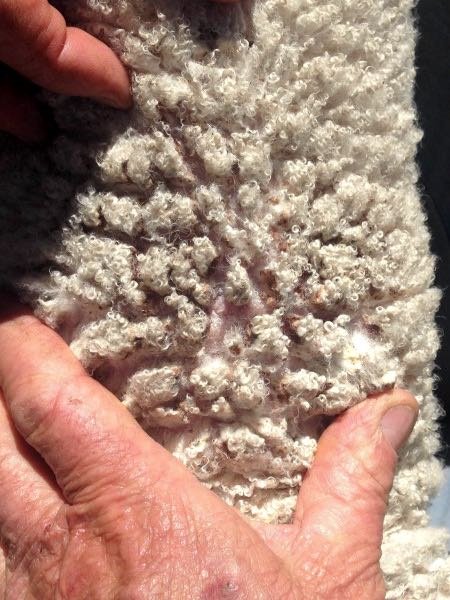Lumpy Wool
Lumpy wool disease in sheep can occur after prolonged rainfall, and results in loss of condition, reduced skin/wool value, and possible death in affected mobs.
What causes Lumpy Wool?
Lumpy Wool, or 'dermo', is a contagious bacterial infection caused by the bacterium Dermatophilus congolensis. The infection inflames the skin and forms hard scabs that lift from the skin as fleece grows resulting in the characteristic lumpy wool.
When to watch out for Lumpy Wool?
Lumpy Wool often develops following prolonged wetting of the fleece and skin. The bacteria are dormant on the skin when dry, but spread rapidly when wet causing skin discharge and scab formation.
Lumpy Wool mainly occurs in weaners or hoggets, especially those with a fleece type that wets easily. Young lambs less than six weeks of age are susceptible to lumpy wool due to the low protective wax content of their wool. Wet weather coinciding with lambing presents high-risk conditions as the infection spreads from the ewe to the newborn lamb.
Clinical signs of Lumpy Wool in sheep
Infection causes the skin to become inflamed. Serum, pus and dead skin repeatedly lift into the fleece forming scabs.
- Columns of hard lumps form along the wool staple
- Scabs are more significant on woolled areas and advanced cases have hard lumps or plates of scabs across their back.
- In non-wool areas, such as the face and ears, the scabs are generally less than 1cm in diameter
- The scabs lift from the skin with the fleece as it grows, causing the characteristic lumpy wool appearance.
What is the difference between Lumpy Wool and Fleece Rot?
Because the cause and treatment of Lumpy Wool is different to Fleece Rot, it is important to differentiate between the two. Lumpy Wool tends to form columns of hard lumps along the wool staples, whereas Fleece Rot appears as crusty, discoloured bands parallel to the skin.
How to prevent Lumpy Wool?
Lumpy Wool disease can spread between sheep when infected sheep become wet and have physical contact with non-infected sheep. If present, separate infected sheep from the flock to help reduce Lumpy Wool spread and assist blowfly management.
Use of commercially available dip additives (such as 0.5% zinc sulphate solution) may act as a preventative.
- Limit physical contact between wet sheep and don’t yard wet sheep
- Shear and dip young sheep first, before the area becomes contaminated from older sheep which may be carriers of the disease
- Shear or dip infected sheep last.
How to treat Lumpy Wool?
Most sheep will develop immunity to lumpy wool infection and in most instances the active skin infection heals within four to six weeks.
In severe cases, sheep can be treated with antibiotics
Cull chronically infected sheep due to their ongoing susceptibility to flystrike.
Adapted from content by district vet Katelyn Braine.